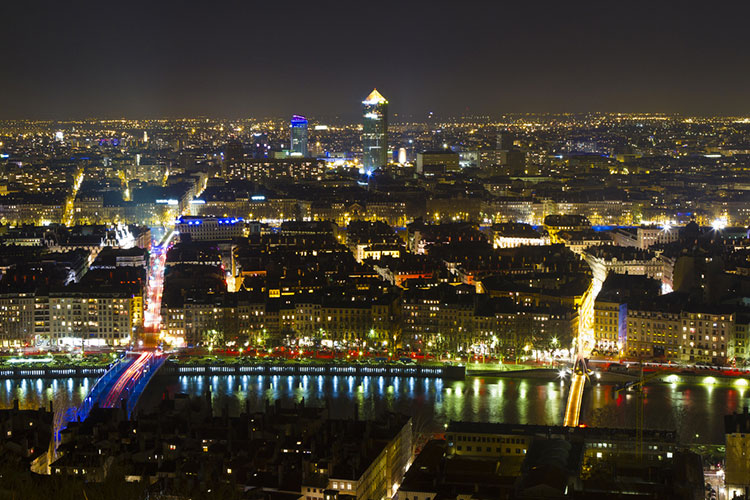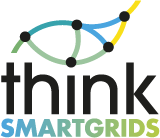In 2015 the French ministries in charge of Ecology and Urban Development issued a request for projects “industrial demonstrators for a sustainable city[1] ». This request for projects was an extension of several programmes aimed at “testing new ways of planning and management of urban projects”. These are the “Cities of Tomorrow”, and “Sustainable and inclusive city” projects, the “eco-district” and “ecocities” labels, the “integrated territorial projects” and the “positive energy for green growth territories”. Smart Grids are at the heart of this dynamic.

Vieux Lyon – Photo credit : Alvaro[2] on Flickr in CC
The list of winning projects for the RFT “Industrial demonstrators for a sustainable city” was announced on 23 December 2015[3].
The eleven wining projects have used a wide range of approaches to the provision of energy. Two of them explicitly include the deployment of Smart Grid technologies.
1 – Lyon Living Lab foresees the establishment of a digital platform for the management of services in the eco-neighborhood of Lyon Confluence. This platform will collect use/consumption and production data (energy, water, transportation, heating, public lighting…) with a view to greater optimization. The project involves Bouygues, Lyon Confluence and GE Grid Solutions in a consortium with 70 partners and the metropolis of Greater Lyon.
2 – Digital Saint-Étienne is also based on an open and scalable digital platform for the collection, analysis, storage and provision of data relating to transportation, the production and consumption of energy, water and waste. The project is supported by Suez, in a consortium with the Local Agency for Energy and Climate of the Loire region, the Inter-municipal Association of Energy of the Loire (Syndicat Intercommunal d’Énergie de la Loire), the Cité du Design, the Mines School of Saint-Etienne and Saint Etienne Metropolis.
3 – Digital Twin City Digital Twin City in Rennes plans “the transformation of professional practices linked to urban planning and city management” by means of a 3D digital tool. Named “digital twin of the city”, this tool allows the testing of urban design solutions, to work in a participatory way to show results. The project brings together the Images et Réseaux cluster, Dassault Systèmes and Rennes Metropole.
4 – Rêve de scènes urbaines in the town of Plaine Commune seeks to create a “ideas box” for innovative solutions in terms of resources, health, energy insecurity, available to local authorities and residents.” The consortium led by Vinci brings together 15 private companies (Orange, Veolia, Schneider, Numericable, …), three public operators (SNCF, RATP and CEA) and the greater Plaine Commune conurbation.
5 – Le projet STEP/HEP in Mouvaux (North) is focused on the renovation of an old neighborhood to make it fully energy self sufficient, as well as the development of replicable solutions for the direct involvement of people in the energy transition. The project involves Rabot Dutilleul Construction and the city of Mouvaux.
6 – Live Grid Paris Saclay plans the development of innovative infrastructure and common services, including a multi-energy Smart Grid, as well as a digital platform. At present, three major sub-projects are being developed: a microgrid project, a project of intelligent buildings and a project simulating the behaviour of Smart Grids. Various technical solutions are being considered including an intelligent heat and cooling network using deep geothermal energy and the intelligent networking of two buildings with different characteristics, one modern and well insulated, the other older with high heat loss. The L’Établissement Public Paris Saclay (EPPS) has brought together 36 private players in a consortium[4].
7 – T.E.S.T. (Ecological and social transition within Regions) at Aulnoy-lez-Valenciennes aims to create an exemplary neighborhood which is leaning towards energy self-sufficiency. An “energy chain” closed greenhouses coupled with aquifers and regenerated geological storage facilities power the heating and cooling of the district. The project involves the Environmental Studies Workshop (A2E) in a consortium with Armines, GrDF, BC NEOXIMO, Ridoret Menuiserie, IDEX, COFELY AXIMA and the city of Aulnoy-lez-Valenciennes (North of France).
8 – Descartes 21 aims to put in plance, in the 123 hectares of the Cité Descartes in the commune of Champs-sur-Marne, “a new model of energy sharing” to move towards a Low-Carbon territory. The project is led by Bouygues Energies and Services in a consortium with EMBIX, IDEX, Sodearif, the RATP, Cap Gemini, GE Grid Solutions and the public establishment of teh Aménagement Epamarne / Cité Descartes.
9 – Smartseille + aims to develop a global approach to sustainable urban development that combines energy solidarity, mutualised parking, conciergerie services and spa services in the ancient port area of Marseille. The project brings together EIFFAGE sustainable development, EDF collectivités, Orange Business Services, EGIS and the Euroméditerranéé national interest operation[5].
10 – The Relais des Possibles project plans to turn the Fontainbleau-Avon train station into a “connected and open place”. A model of the station will anticipate the transformations in terms of infrastructures and lifestyle in order to plan for the effects of climate change. The project is led by the the Brie’Nov Living Lab and ARENE Ile-de-France. It brings together the region of Fontainebleau, the regional associations Pacte Sud 77, Tourisme 77 and a coalition of businesses.
11 – Home LiFi (Light Fidelity) at Palaseau plan to experiment new urban services thanks to technologies for the exchange of data by visible light. The project is led by EDF in a consortium with SAEML, Scientipôle Aménagement, Constructions et Développements Urbains, SLA Smart Lighting Alliance and Palaiseau / Camille Claudel district[6].
With the technical support of the state for five years, and investment from the “programme d’investissement d’avenir”, the winners will be able to carry out an exemplary urban project that takes into account the following criteria: light carbon footprint, energy self-sufficiency, circular economy, protection of water resources, restoration of biodiversity, functional and social diversity and citizen participation.
ITEMS International for Think Smartgrids
[1] http://www.developpement-durable.gouv.fr/11-laureats-de-l-appel-a-projets.html
[2] https://www.flickr.com/photos/7961121@N04/5343959389/
[3] http://www.developpement-durable.gouv.fr/IMG/pdf/2015-12-23_CP_Demonstrateurs_villes_durables_def.pdf
[4] http://www.livegrid.fr
[5] http://www.smartseille.fr/
[6] http://www.partagerlaville.com/projets/quartier-camille-claudel



